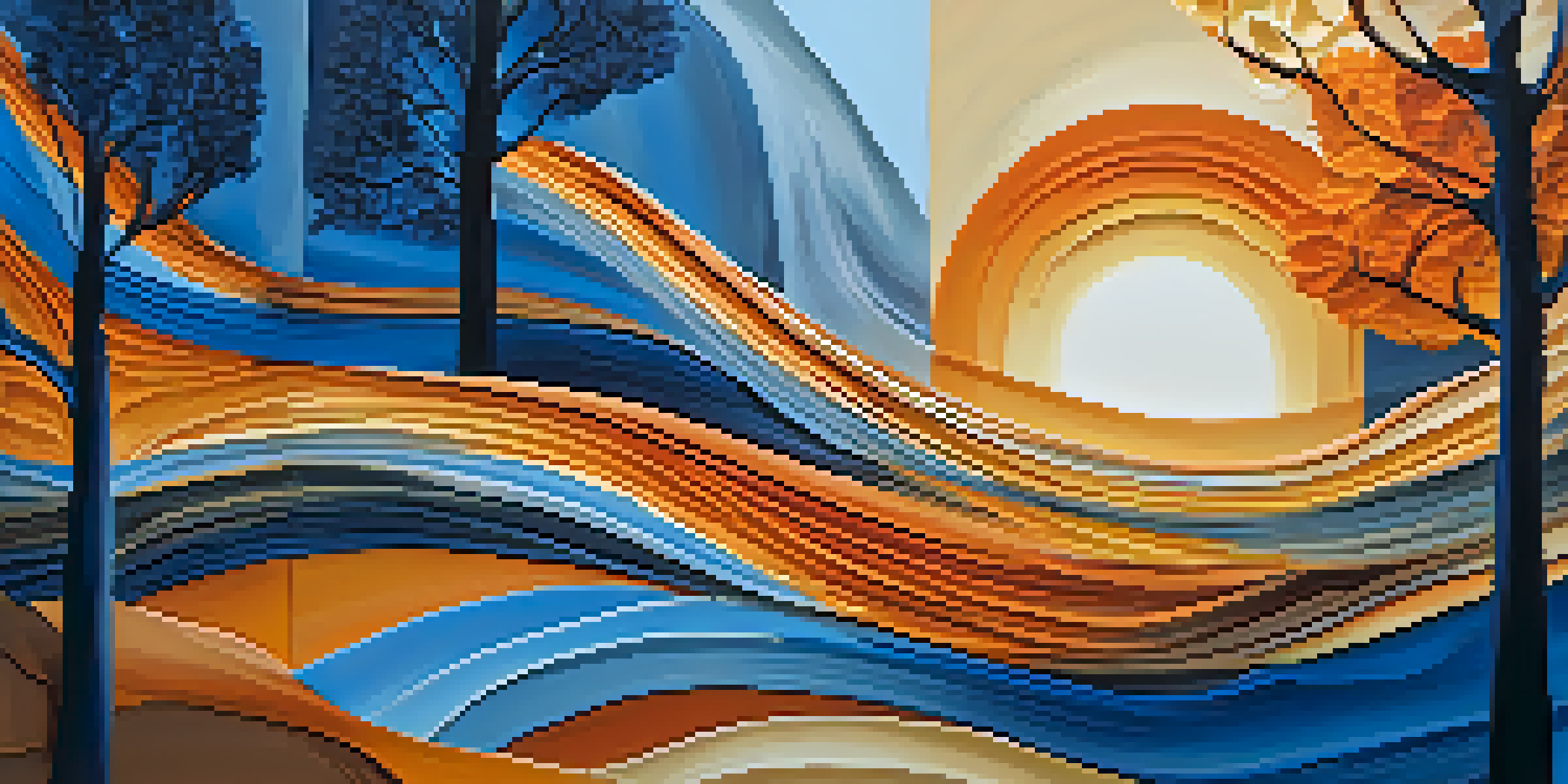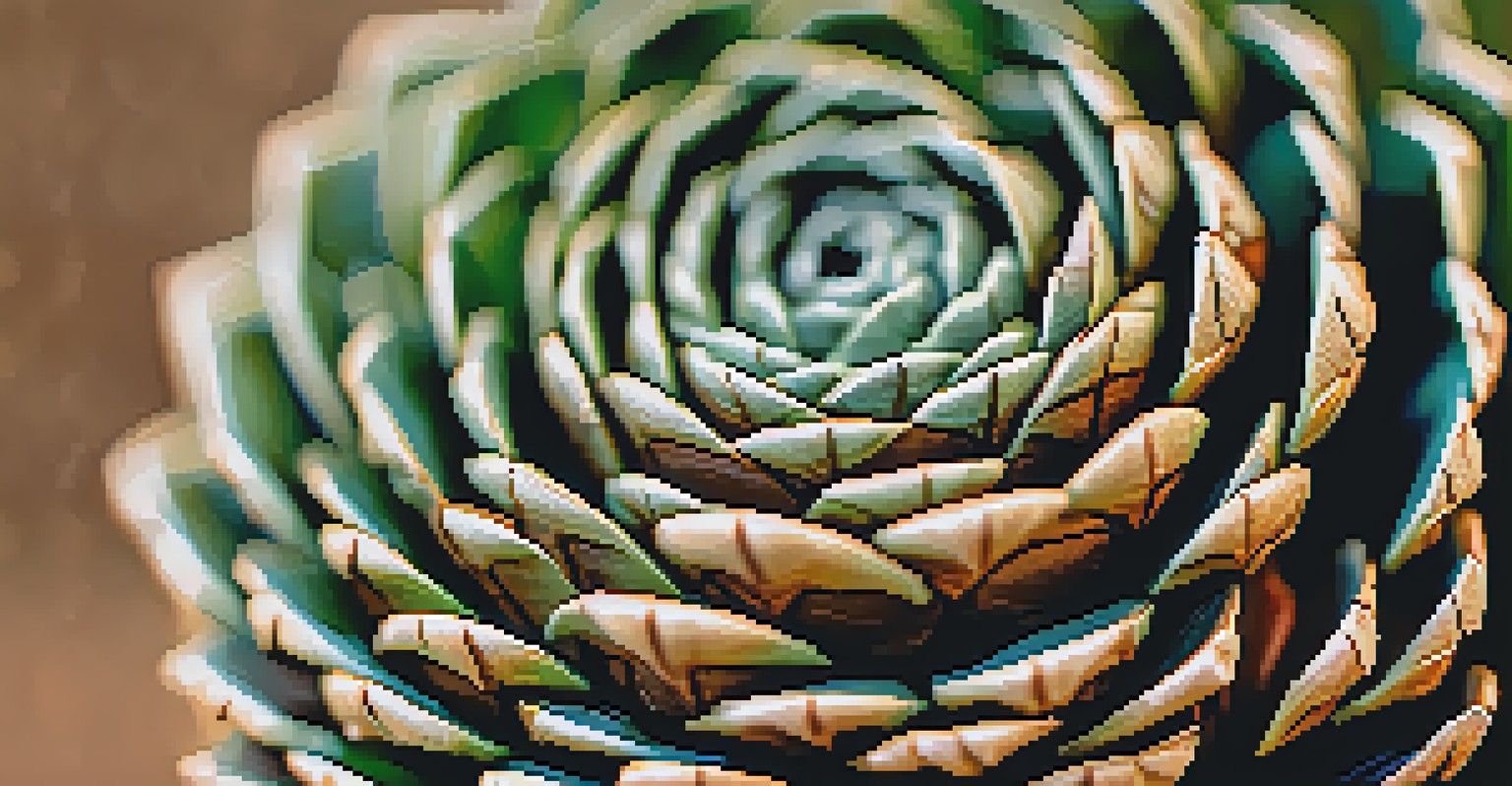Nature and Abstraction: Finding Form in the Wild

The Intersection of Nature and Abstraction in Art
Nature has always been a rich source of inspiration for artists, blending the organic with the abstract. When we think of abstraction, we often imagine shapes and colors that seem to float independently of their real-world counterparts. Yet, many of these forms find their origins in natural elements like trees, water, and the sky. By examining how artists interpret these natural forms, we uncover the deep connection between reality and abstraction.
Nature is not a place to visit. It is home.
For instance, consider the swirling patterns of a Van Gogh painting. His brush strokes often mimic the flow of wind through the trees or the rhythm of waves crashing on the shore. This interplay highlights how abstract forms can evoke the essence of nature, even when they're not directly representational. It’s a reminder that abstraction doesn't exist in a vacuum; it's often a dialogue with the natural world.
Ultimately, the fusion of nature and abstraction challenges us to see beauty in unexpected places. By breaking down the elements of nature into their fundamental shapes and colors, artists invite viewers to engage with the world around them in new and imaginative ways. This journey of discovery encourages us to explore our surroundings and find the abstract within the tangible.
Finding Patterns: Nature’s Hidden Geometry
One of the most fascinating aspects of nature is its inherent geometry. From the spiral of a seashell to the branching of trees, patterns abound in the wild, often mirroring mathematical concepts. This connection between nature and geometry inspires artists to explore these shapes in their work, revealing the underlying order that exists in the chaos of life. By focusing on these patterns, artists can create pieces that resonate with both the mind and the heart.

Take, for example, the Fibonacci sequence, which can be observed in various natural phenomena, such as flower petals and pinecones. This sequence not only informs the structure of these organisms but also serves as a compelling framework for artists seeking to incorporate mathematical beauty into their work. By tapping into these familiar patterns, artists can create a sense of harmony that speaks to the viewer’s subconscious.
Nature Inspires Abstract Art
Artists draw on natural elements, using abstraction to create a dialogue that deepens our connection to the environment.
Through the lens of abstraction, these geometric forms can be manipulated and reimagined, allowing artists to push boundaries while staying rooted in nature. This balance of order and freedom gives rise to innovative artwork that captivates audiences and encourages them to appreciate the delicate interplay between nature's structure and artistic expression.
Color and Emotion: Nature’s Palette in Abstract Art
Color plays a pivotal role in both nature and art, serving as a powerful emotional tool. Artists often borrow hues from their environments to evoke feelings and set the mood within their pieces. For instance, the vibrant reds and oranges of a sunset can inspire warmth and excitement, while the cool blues of a mountain lake can foster calm and tranquility. This emotional resonance is crucial in abstract art, where color can convey meaning beyond the visual.
Art is the most beautiful of all lies.
Consider the work of abstract expressionists like Mark Rothko, who used color blocks to communicate profound emotions. His pieces, influenced by the natural world, invite viewers to immerse themselves in the experience of feeling rather than simply seeing. This approach encourages a personal connection, reminding us that nature's colors are not just visually appealing but also deeply emotive.
By exploring the emotional impact of color, artists can create a bridge between the viewer and the landscape. Nature's palette becomes a tool for storytelling, where each shade carries its own narrative. This connection enriches both the artistic process and the viewer's experience, emphasizing the importance of color in finding form in the wild.
Textures of Nature: Influence on Abstract Forms
Textures found in nature are another key element that artists draw from when creating abstract works. The rough bark of a tree, the smoothness of a pebble, or the delicate petals of a flower all contribute unique tactile qualities that can be translated into art. These textures not only add visual interest but also engage the senses, inviting viewers to experience the artwork on multiple levels.
For example, the work of artists like Anselm Kiefer captures the raw textures of nature, using materials such as ash and straw to evoke the earth's inherent qualities. His pieces resonate with the viewer's tactile memory, recalling the feel of natural surfaces and reminding us of our connection to the environment. This exploration of texture allows artists to transcend traditional boundaries, pushing the limits of abstraction.
Geometry in Nature's Patterns
The inherent geometry found in nature, such as the Fibonacci sequence, serves as a framework for artists to explore harmony in their work.
By incorporating nature's textures into their work, artists can create pieces that are not just visually appealing but also rich in sensory experience. This multifaceted approach invites viewers to engage with the artwork in a more profound way, fostering a sense of connection to both the art and the natural world.
Symbolism in Nature: Abstract Interpretations
Nature is rife with symbolism, and artists often draw upon these meanings to infuse their abstract works with deeper significance. Take, for instance, the lotus flower, which symbolizes purity and enlightenment in various cultures. When artists abstract these symbols, they can create layers of meaning that resonate with viewers on a personal level. Exploring these connections enriches the narrative within the artwork and invites deeper contemplation.
Similarly, the changing seasons can serve as powerful symbols of transformation and renewal. By abstracting these concepts, artists can convey emotions related to growth and change, allowing viewers to reflect on their own experiences. This symbolic layer adds depth to abstract art, encouraging a dialogue between the piece and the observer.
The beauty of symbolism in nature lies in its universality; it speaks to shared human experiences. By weaving these symbols into abstract forms, artists create a bridge between their personal interpretations and the collective understanding of nature's messages. This transformative process invites viewers to explore their own interpretations and connections to the natural world.
Nature as a Source of Inspiration for Abstract Techniques
The techniques artists use to create abstract art are often influenced by the natural world. For example, the spontaneity of watercolor can mimic the fluidity of a flowing river, while the bold strokes of acrylic paint can capture the energy of a stormy sky. By experimenting with various mediums and techniques, artists can evoke the essence of nature in their abstract works, creating pieces that are both dynamic and evocative.
Moreover, nature encourages artists to embrace experimentation. Just as the landscape is ever-changing, artists can explore new methods, whether it's drip painting inspired by the randomness of raindrops or layering textures that reflect the complexity of a forest floor. This sense of playfulness can lead to groundbreaking discoveries within abstract art, pushing the boundaries of what is possible.
Color and Emotion in Art
Artists utilize colors from nature to evoke emotions and create personal connections, enriching the viewer's experience.
By allowing nature to guide their techniques, artists can create a dialogue between the environment and their creative process. This relationship not only enhances the artwork but also fosters a greater appreciation for the natural world, reminding us of the beauty and unpredictability that exists in both art and nature.
The Future of Nature and Abstraction: New Frontiers
As we look to the future, the relationship between nature and abstraction continues to evolve. With advancements in technology and the rise of digital art, artists are finding new ways to interpret natural forms and patterns. Virtual reality and digital painting allow for immersive experiences that can transport viewers into abstract representations of the natural world, creating new dimensions of engagement.
Moreover, environmental concerns are prompting artists to address themes of sustainability and conservation through their work. By abstracting these issues, they can raise awareness and inspire action, using art as a powerful tool for change. This intersection of nature, abstraction, and activism reflects a growing consciousness about the role of art in society and our responsibility to the planet.

Ultimately, the future of nature and abstraction is a promising landscape filled with potential. As artists continue to explore this dynamic relationship, we can expect to see innovative approaches that challenge our perceptions and deepen our connection to both art and the environment. This ongoing dialogue reminds us that nature is not just a subject for art but a vital source of inspiration for generations to come.